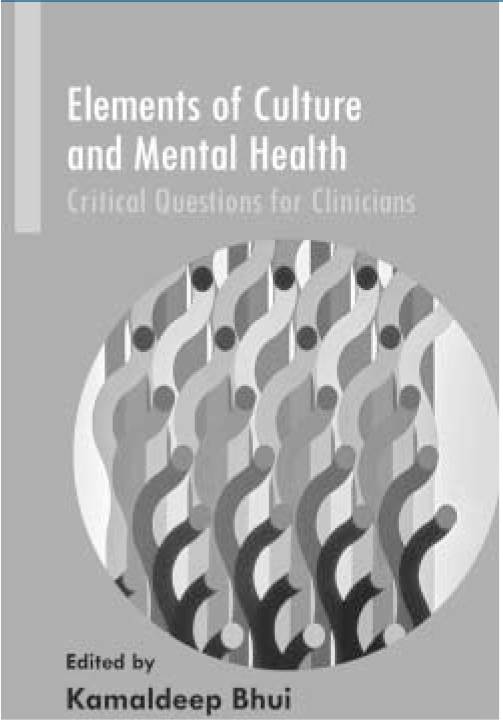
It is interesting to compare Kam Bhui's book with Philip Rack's pioneering volume Race, Culture and Mental Disorder, written 30 years ago by the founder of the Transcultural Psychiatry Society. This was a handbook which introduced mental health professionals to migration, dislocation, rejection and ethnic identity at a time when multiculturalism was promoted as the solution to racism, discrimination and ethnic disadvantage.
This new, slim but compendious book is informed by the present generation's clinical experience and research. There are 17 contributors to the 20 chapters, most of which are just 4 pages long, followed by about 2 pages each of references. Some of the chapters are far more theoretical than Rack's handbook and draw on sociology, social anthropology and epistemology. The quotations from Heidegger and Husserl in the chapter entitled ‘Can psychotherapeutic interventions overcome epistemic difference?’ might deter a newly qualified mental health professional who is looking for a practical guide. On the other hand, as a resource for more advanced clinicians and for researchers, this small, concise volume can serve as an excellent and up-to-date annotated bibliography. In the limited available space the book covers the whole spectrum of dilemmas and controversies, including the cross-cultural validity of Western diagnostic systems and the acknowledgement of ‘race’ in the transference.
Several chapters helpfully show how to enhance the role of interpreters, who can be an invaluable resource for the clinician who is trying to decode unfamiliar idioms of distress. Included in Tribe & Qureshi's checklist of 15 recommendations for good practice when working with interpreters is the sensitive injunction to consider the well-being of the interpreter and the potential for vicarious traumatisation.
Faisil Sethi's chapter on ethnopsychopharmacology covers recent research on ethnic variation in pharmacogenetics, kinetics and dynamics. The chapter by Rathod & Naeem on cognitive-behavioural therapy for people from different cultural backgrounds reiterates Arthur Kleinman's explanatory model approach on how cultural orientation can influence psychopathology, illness attribution, help-seeking behaviours, care pathways and barriers to engaging with therapy. A chapter on the benefits and limitations of the cultural formulation includes the incisive caveat that an inflexible cultural formulation ‘runs the risk of thematising the cultural perspective, losing the patient and their particular perspective in the process’ (p. 48).
An excellent chapter by Rachel Tribe reviews the current debate on whether trauma-focused therapy is helpful for the survivors of crimes against humanity. Is post-traumatic stress disorder necessarily a pathological state or can it be a normal human response to exceptional events?



eLetters
No eLetters have been published for this article.